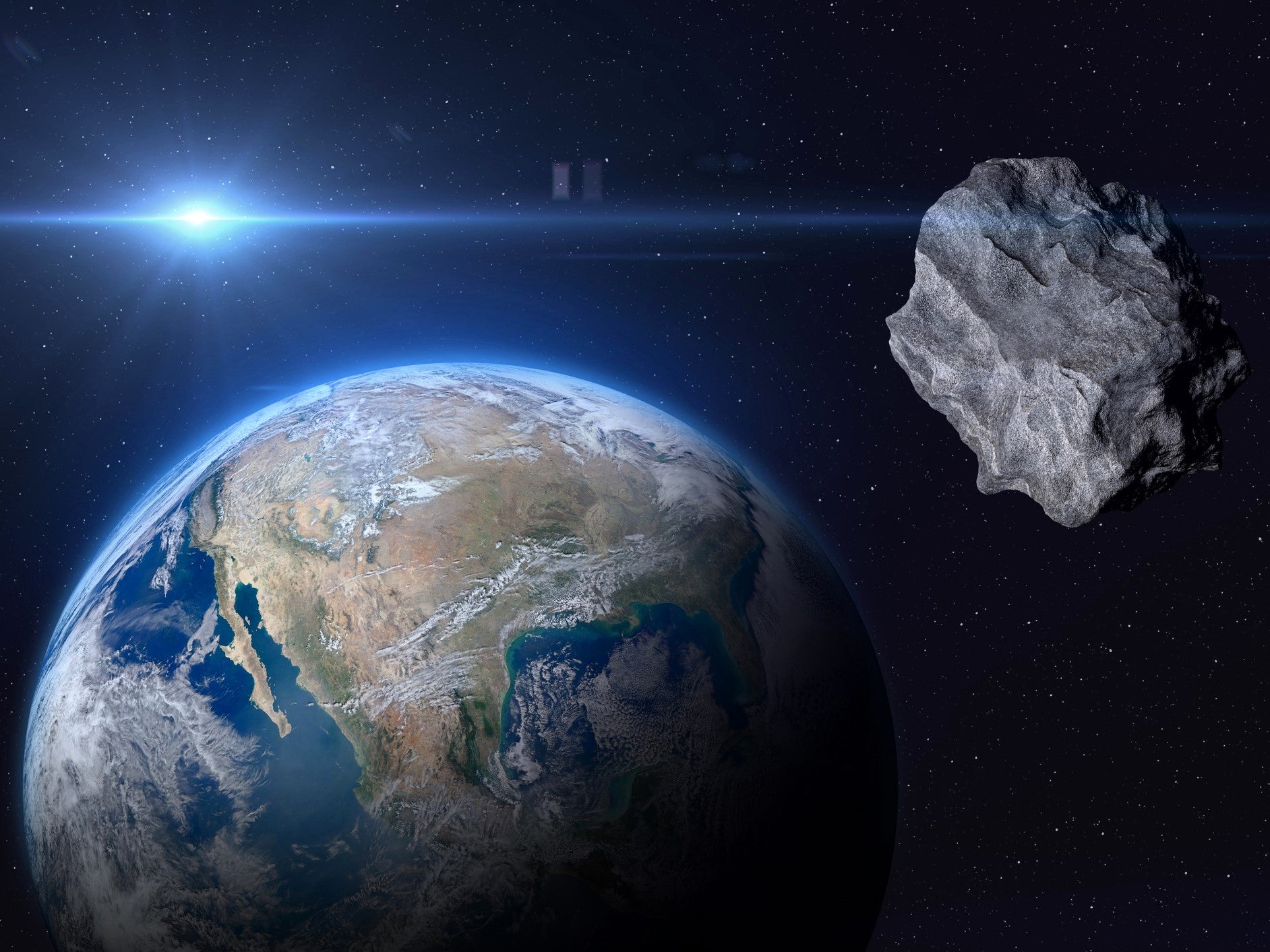Asteroid the size of Blackpool Tower to skim past Earth
Nasa warns asteroid 2013 WV44 will pass close to Earth on Wednesday

Nasa is tracking a “potentially hazardous” asteroid that is set to pass Earth on Wednesday.
The huge rock, named 2013 WV44, measures 160 metres in diameter, making it roughly the same length as Blackpool Tower.
The US space agency’s Centre for Near-Earth Object Studies estimates the asteroid will pass within 3.3 million kilometres of Earth, which is relatively close in terms of celestial objects but poses no threat to Earth.
The asteroid was first observed in 2013, with astronomers noting that it travels at 11.8km per second – roughly 34 times the speed of sound.
It will make its closest approach to Earth at 9am BST on Wednesday, 28 June.
Nasa and other space agencies are currently tracking hundreds of other potentially hazardous objects that could pose a threat to life on Earth, though the difficulty of spotting them means some are not seen until right before impact.
In February, a small asteroid measuring 1 metre in diameter was detected just seven hours before it entered the Earth’s atmosphere over northwestern France.
“Most Near-Earth Objects (NEOs) pose no peril at all,” Nasa’s Jet Propulsion Laboratory noted in a recent blog post.
“Scientists and engineers are developing plans for warning systems and diversion tactics, just in case an asteroid should ever be found in an orbit that could endanger our planet.”
One of these diversion tactics was tested last year during Nasa’s Double Asteroid Redirection Test (DART) mission, which saw a spacecraft deliberately collide with the Dimorphos asteroid in order to alter its trajectory.
It was the first ever test of a planetary defence system and marked the first time that humanity has changed the motion of an asteroid or any celestial body.
Following the mission, Nasa said that insights from the DART craft would help scientists prepare for any potentially deadly asteroids in the future that could threaten life on Earth.
“We have the technology now to do this,” Nasa’s Planetary Defense Officer Lindley Johnson said following the event. “To find these objects, years, decades, even a century before they pose an impact threat to the earth.”
Subscribe to Independent Premium to bookmark this article
Want to bookmark your favourite articles and stories to read or reference later? Start your Independent Premium subscription today.

Join our commenting forum
Join thought-provoking conversations, follow other Independent readers and see their replies